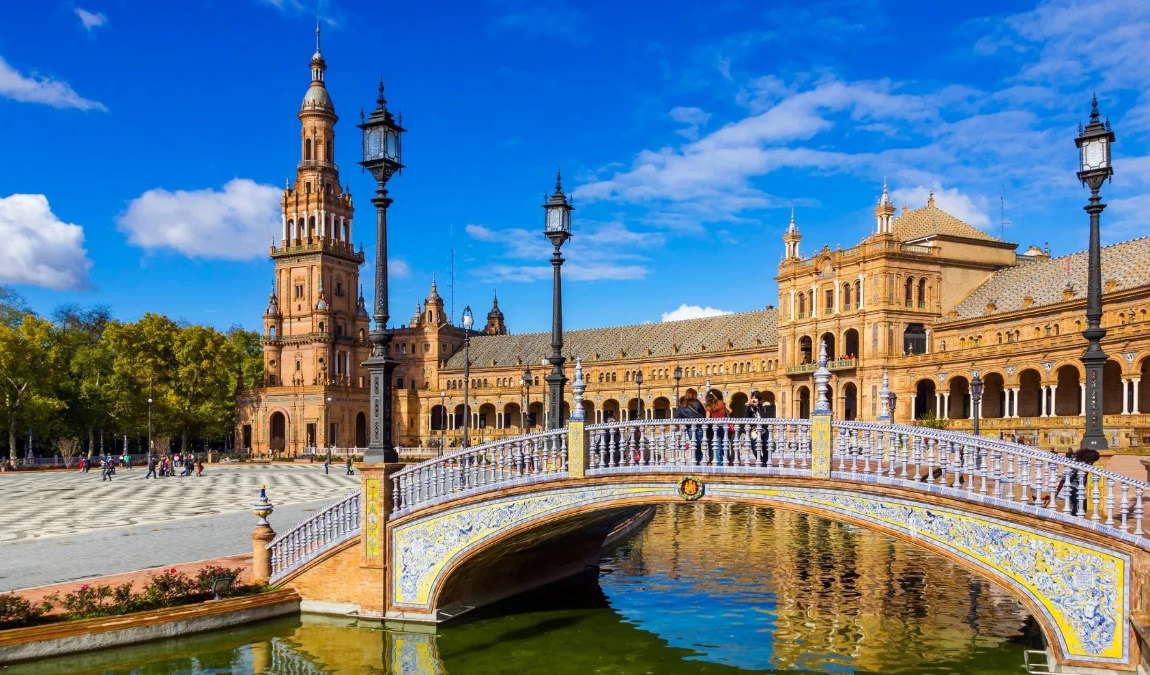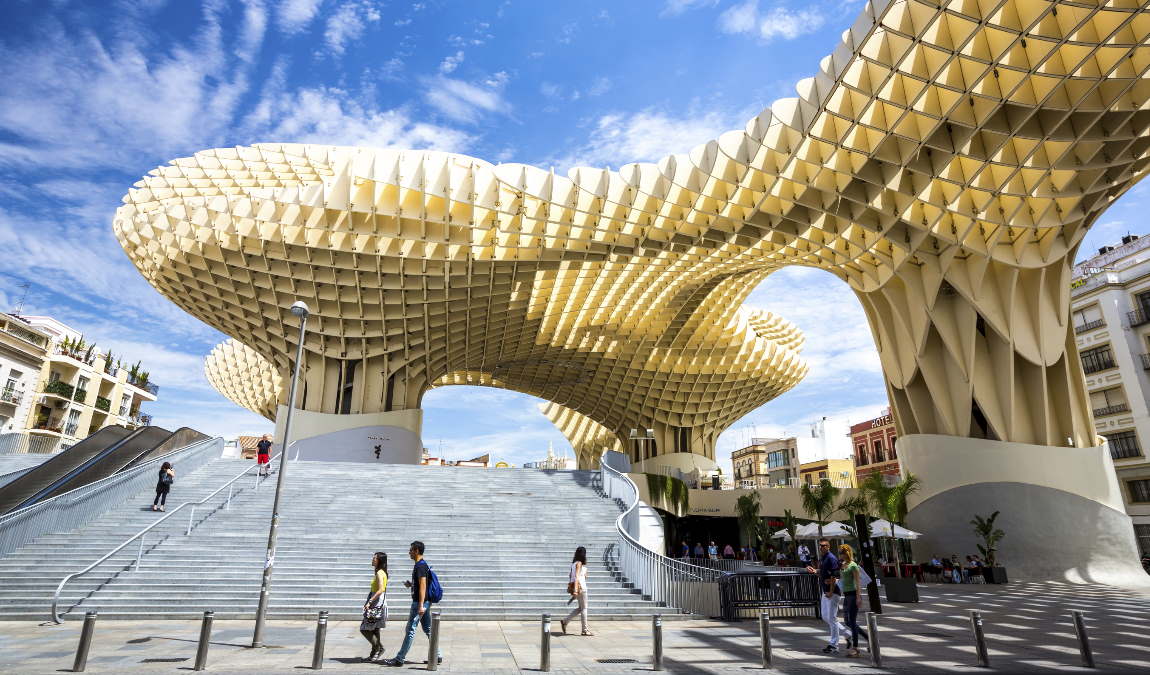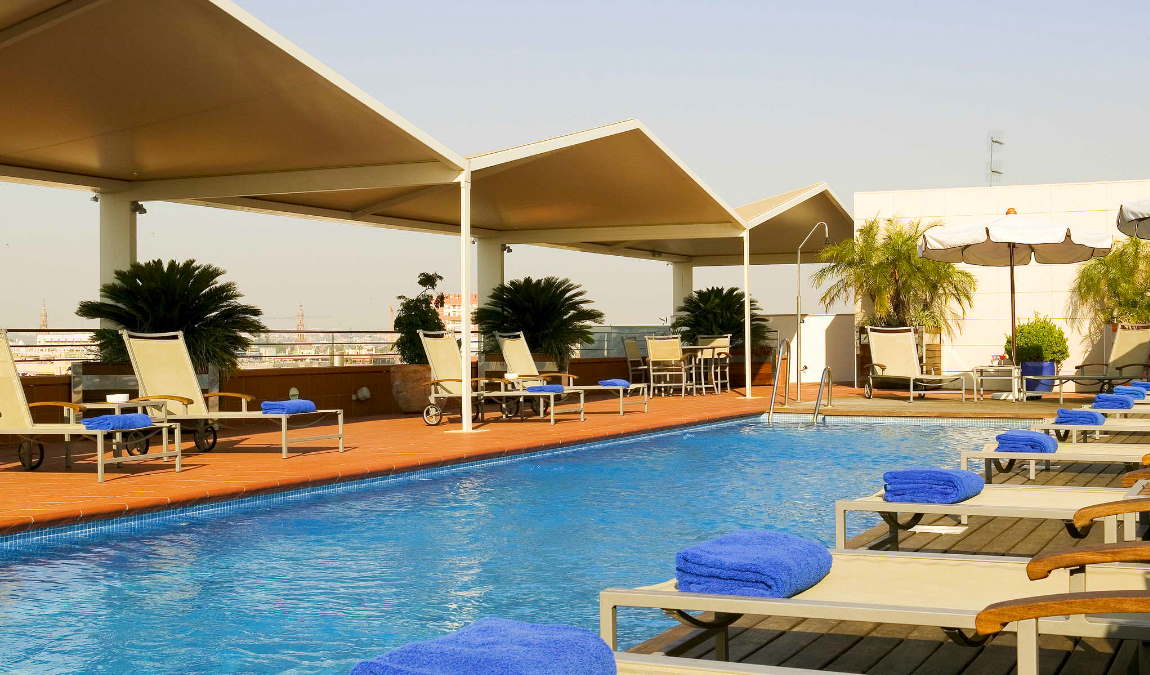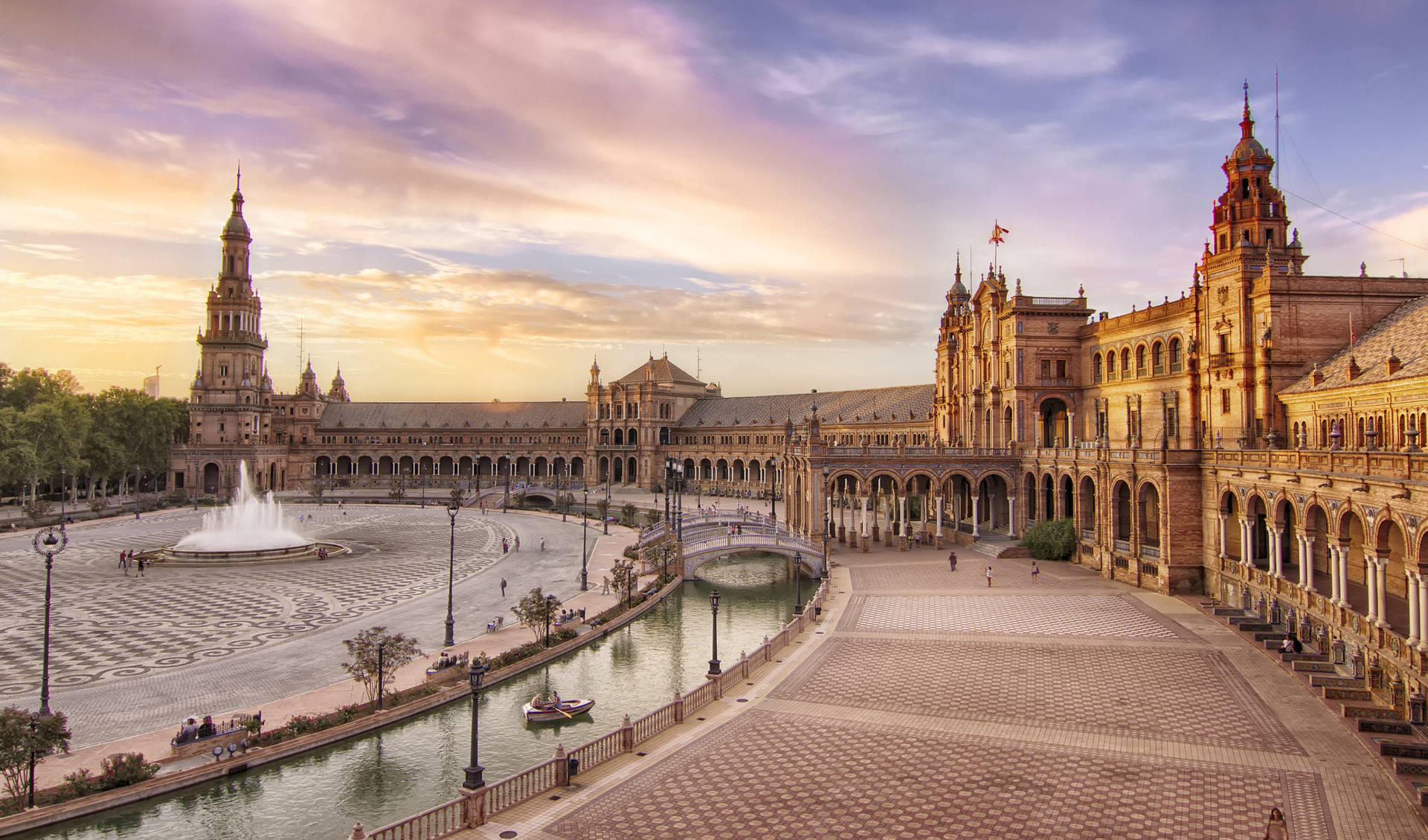The coldest month of winter has arrived in the capital of Andalusia. But it is a special month here, with the scent of ripe oranges, sunshine and no frost. The Christmas rush has subsided; only the evening street illumination reminds us of the New Year holidays.
Children are writing letters to the Three Kings, waiting for the fulfilment of their most cherished wishes and lots of treats. It is precisely the atmosphere you will find yourself in if you come to Seville in January.

Holidays in Seville in January: pros and cons
Orange trees with bright orange fruit against the azure sunny sky are unlikely to leave at least one tourist who visited Andalusia indifferent.
And, if you consider that in the coldest winter month, the average air temperature is about +12 ° C, you can understand why reviews of holidays in Seville in January are almost always positive. Let's name the main advantages of the January trip:
- Tourist activity is declining, so the month is perfect for lovers of quiet and relaxing holidays.
- Even though January is considered the coldest month of the year, most of its days are sunny, and the air temperature rarely drops below +10 ° C, allowing you to take long walks around the city.
- Travelling will be a great idea to spend the winter holidays with children — you can have fun and learn many new things.
- January is the start of the sale season, so you can combine your holiday with a bargain shopping spree.
The trip has very few downsides, rather its peculiarities in the middle of winter.
When preparing for your trip, remember that unexpected rain or cold weather is still possible in January. The temperature here very rarely falls below +5 °С, and even more rarely — below 0 °С, but it will happen. Then walks will not be very comfortable, and you should adjust the plans.
The weather in Seville in January
The weather in January and February is wintry, as it is for Spain in general and is quite variable. It happens that on a sunny day, you can walk around in a T-shirt, and sometimes the thermometer shows negative values. However, the temperature has never dropped below -5°C.
Overall, the weather at the beginning of January has no frost or snowfall.
Daytime thermometer readings are mainly at +12 °С - +17 °С and are very comfortable for walking around the city to explore the sights.
The day temperature in Seville in the middle of January, according to forecasters' observations for the last years, practically did not fall below +10 °С; more often, it stays at +15 °С. Night temperature can be lower and sometimes falls to +3 °С, though on average, it remains at +8 °С - +10 °С.
Temperature spikes, changes of sunny and cloudy days and the same lack of snow also characterise the weather in Seville at the end of January. Accordingly, we do not recommend going on a trip without warm clothes.
Air temperature
The relatively warm, sunny and sometimes rainy winter in Seville is explained by the fact that the city is under the influence of the Mediterranean climate. There were seasons when the air temperature in Seville in January reached its possible maximum — +24 °С, and sometimes it fell to -5 °С. Of course, such phenomena are not frequent, and the temperature usually stays between these values.
Air temperature in Seville in January
Thus, the average daytime temperature in the middle of winter is about +15.9 °C, and at night — about +7.7 °C. A jacket, comfortable shoes and an umbrella just in case — everything you need to feel comfortable walking in the magical city.
Precipitation
January is not the rainiest month of the year. The total precipitation is about 32.3 mm, with 3 to 10 rainy days during the month. As for snow, it is rare, even exceptional, in Seville. It may snow but does not stay on the ground.
Sunny, cloudy and overcast days
Despite the peak of the winter season, the sun is not rare in the Andalusian sky. There are about 16 to 21 sunny days per month. There are 4 to 5 cloudy days and 5 to 7 days with variable cloudiness.
Tour holidays: what to see in January
Making a sightseeing programme in Seville is easy — everything is interesting here. It is difficult to fit the whole list of sights into one trip. Therefore, we will tell only about some of the most colourful and suitable excursions for this time of the year.
Undoubtedly, at the beginning of January, you can choose a sunny day for a fantastic walk around the Plaza de España. It is one of the most unusual squares in the modern world, although it was built in 1928 to open the Ibero-American Exhibition.
In the centre of the circular square paved with tiles is a large fountain, and framing the territory on one side is a huge semicircular building made in two styles at once — Art Nouveau and the local original Mudejar style — an awe-inspiring place. You can continue your walk in the Parc Marie-Louise, into which the square passes.
Orange and olive trees, various buildings perfectly blended into the landscape, children's playgrounds, a pond — everything is here to win visitors' love. Entrance is free of charge. And while the park is full of tourists during the day, the locals join them in the evenings, as they usually enjoy strolling here with their children.
And you can find time to come for a walk even in the middle of January — palm trees are still as green as ever, and orange trees rejoice with brightly coloured fruit.
If you have curious little ones travelling with you, they need to know why there is an 8-metre whale figure hanging from the ceiling, why there are comic books on the walls, and to see if they can touch the exhibits with their hands. Answers to these and many other questions await in the House of Science. You can come here at the end of January or any other time if it suddenly gets cold outside. Besides, it has its planetarium with adult and children's programmes, so the excursion is suitable for any age category.
It is impossible not to tell about the following unusual place, and indeed, it is impossible not to visit it, being in the capital of Andalusia. Metropolis Parasol (roughly translated as "city umbrella") is a complex of buildings in the form of giant umbrellas (the locals call them mushrooms), laying on massive columns connected and consisting of four levels.

The underground floor houses the remains of Roman ruins, the ground floor is dedicated to the Central Market, the first level is an open-air event space, and the second and third levels are equipped with observation terraces offering stunning city views. There are no analogues of this innovative building in the world, so this is probably one of the top items on the list of visits.
Holidays, events and festivals
People usually make plans and wishes at the beginning of a new year. Holidays in Seville in January are quite capable of helping to fulfil these wishes; it is only worth coming here during the winter holidays.
On the 1st of January, Spain celebrates the New Year. It is just an official day off when all shops, restaurants, pharmacies and government offices are closed.
The celebrations occur at night, over family dinners and nightly fireworks, and by morning everything goes quiet; the city empties and comes alive again only on the morning of the 2nd of January.
The favourite holiday of the year for Spanish children is the Feast of the Three Kings, celebrated on January 6. On this day in Spain, many children get their Christmas presents. It is to them (and not to Father Christmas) that children write letters with their most cherished wishes, hoping that they will be fulfilled.
The Magi, or the Three Kings, appear in the city on the night of 5-6 January, parading and greeting the town's population. Moving brightly coloured platforms follow them, scattering candy, much to the children's delight.
Children's play areas with all kinds of entertainment are set up all over the city, and the celebration ends with the distribution of gifts that children are looking forward to.
Shopping
It's not a secret that no trip without shopping. Souvenirs, clothes, shoes, jewellery — this is a partial list of what tourists usually bring back from their journeys. Shopping in Seville is especially attractive in the second half of January when all the shops in shopping centres offer discounts of up to 80%.
And if you consider that there are at least two or three floors with shops, a large selection of food courts and play areas for children, visiting the shopping centre will take a whole day.
Remember the opportunity to get back 10-15% of your purchases when crossing the EU border. Whatever the value of the goods you purchase, you have the right to claim back the VAT; you must ask the shop to issue the necessary documents. Luxury and mid-range purchases can be made in the boutique in the city centre on Calle Sierpes (shopping street).
Cost of vacation
January is one of the low season months, which starts in November and lasts until the start of Carnival in February. Accordingly, prices in January in Seville are slightly lower than the previous month. So you have an excellent opportunity to spend a wonderful holiday in Andalusia for relatively little money.

Airfares
At the beginning of the month, the demand for tickets may increase slightly, and with it, the ticket fares increase a little, but at most 5% compared to December. However, it is still better to book flights in advance to pay the best possible price. Another option to save money is to fly with low-cost companies.
Package Tours
If you have long dreamed of seeing the sights of Seville, then January is the perfect time because accommodation prices are the lowest of the year. Tour operators try to offer the most favourable holiday options, as the demand for travel at this time is usually low. The tourist flow increases slightly only during the winter holidays.
Accommodations
In January, hotel accommodation becomes cheaper, with an average price per room of 103 euros. In February, the average cost per room will be 138 euros.
Food
The cost of food in Seville, like everywhere else, depends on the distance of a restaurant or café from the city centre — the further away, the cheaper. For example, a meal in a restaurant will cost at least 30-35 euros, while in a café somewhere near the university — almost half the price.
A snack of a toast and a cup of coffee will cost around €5, while two scoops of ice cream will cost €2.50 at the famous Mascarpone Café.
At one chain cafe, somewhat reminiscent of McDonald's but with Spanish-inspired recipes, a set of three sandwiches, a salad and a drink costs €7-10. For €3-5, you can get a couple of jamon and vegetable sandwiches.
- Prices in Seville for Food in Restaurants, Cafes and Supermarkets
- What to Eat in Spain — 48 Spanish Foods You Must Try
- Spanish Fruit and Vegetables — A Seasonal Guide
Tips for travellers with children
Seville is a fascinating city and an excellent idea for a family trip during the winter holidays. Schoolchildren will be interested in visiting the House of Science, Planetarium and Aquarium and on a nice day stroll around the Plaza de España, admiring the fountain and Maria Luisa Park, discovering more and more of its corners.
Of course, we suggest you choose a different time for a holiday with little ones — in January, the weather can be unfriendly, it can rain, and the walks will not be too comfortable.
It is better to choose early spring or early autumn when it is already warm but not yet hot. However, it is worth remembering that hotels can be full at this time due to the influx of tourists, so to save money, the trip should be planned in advance.
And if your trip falls in January, use the short-term weather forecast to take the necessary things for yourself and your baby and adjust the excursion programme according to the weather conditions.
Kidpassage wishes your trip bright, fun and unforgettable; we hope our tips will help you. Let all the days of your holiday be sunny, the weather will be warm, and the amazing city will give you the warmest welcome you can dream of.






